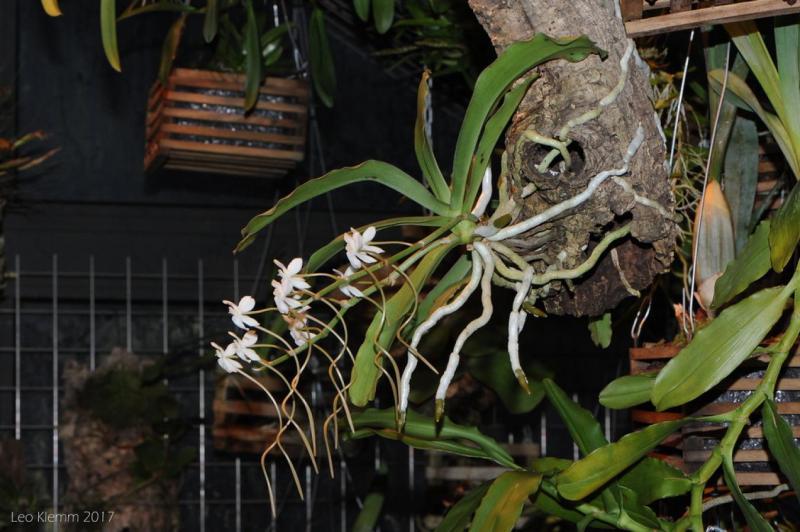Aerangis verdickii
Also known as: Verdick's Aerangis or Aerangis erythrura Aerangis schliebenii Angraecum erythrurum Angraecum augustum Aerangis verdickii var. rusituensis Aerangis rusituensis Aerangis verdickii var. verdickii in the subfamily: Epidendroideae
Native to: Angola Malawi Mozambique Rwanda South Africa Zambia Zimbabwe
General Information
Verdick's Aerangis is a monopodial cool to hot growing epiphytic orchid belonging to the sub family Epidendroideae native to Angola, Malawi, Mozambique, Rwanda, South Africa, Zambia, and Zimbabwe. It is named after the Belgian Orchid Enthusiast in the 1900's.
Plant Description
Monopodial. Grows to 0.9-40cm. Each new growth has numerous oblong shaped tongue shaped leaves that grow to 2-20cm long. The plant tends to climb or sprawl with each new growth
Flowers
Numerous fragrant blossoms appear
Fragrance
The orchid is fragrant. The fragrance can be described as strong and sweet
Substrate(s)
- Coarse
- Bark
- Charcoal
- Spaghnum Moss
- Perlite
Care Notes
This orchid goes into a dormancy phase during winter, during this phase it is best not to provide water unless the plant is starting to look thirsty. The lack of water increases the chance of flowering in spring, and also reduces the likelihood of any rot forming. Do not resume watering until new growth has appeared and is growing strongly.
Often a period of intense growth occurs after dormancy. During this time the amount of light, water and fertiliser the plant receives will directly impact the amount of growth that occurs during this time, and in the case of seedlings, will reduce the time required to reach maturity.
It's recommended to heavily reduce the water amount at the middle to end of autumn to trigger dormancy. Leaves on older bulbs will begin to drop during this time while the newer bulbs continue to mature until terminal leaves appear at the tip of the pseudobulbs.
Repotting can be done any time of the year though it's best to do it in early spring when new growth is appearing as this also means new roots will appear to help the plant anchor into the new media and offset any damage to established roots during the repotting process.
Fragrant:
- IsFragrant
Climate
Grows at low to high elevations. Rainfall ranges from 3mm to 99mm per day, heaviest in July and lightest in December. Humidity ranges from 50% to 64%, highest in August and lowest in March. Temperature ranges from 2C to 27C, highest in June (16C to 27C) and lowest in December (2C to 19C).
Fertiliser
dormant-medium-demand-orchid Use balanced fertiliser during Spring and Summer. Apply fertiliser regularly at half strength year round. Use a high Nitrogen fertiliser during Spring and Summer. Use a high Phosphorous fertiliser during Summer.
Potting
Due to the growth nature of these plants they are best mounted onto cork, tree fern slabs, or even trees if the climate suits. Water regularly especially in hot weather.
Use water retentive media such as moss to prevent roots from drying out quickly This plant does very well in baskets or suspended pots This plant does well mounted to Tree trunks or Fern slabs. Repotting is best done annually.








